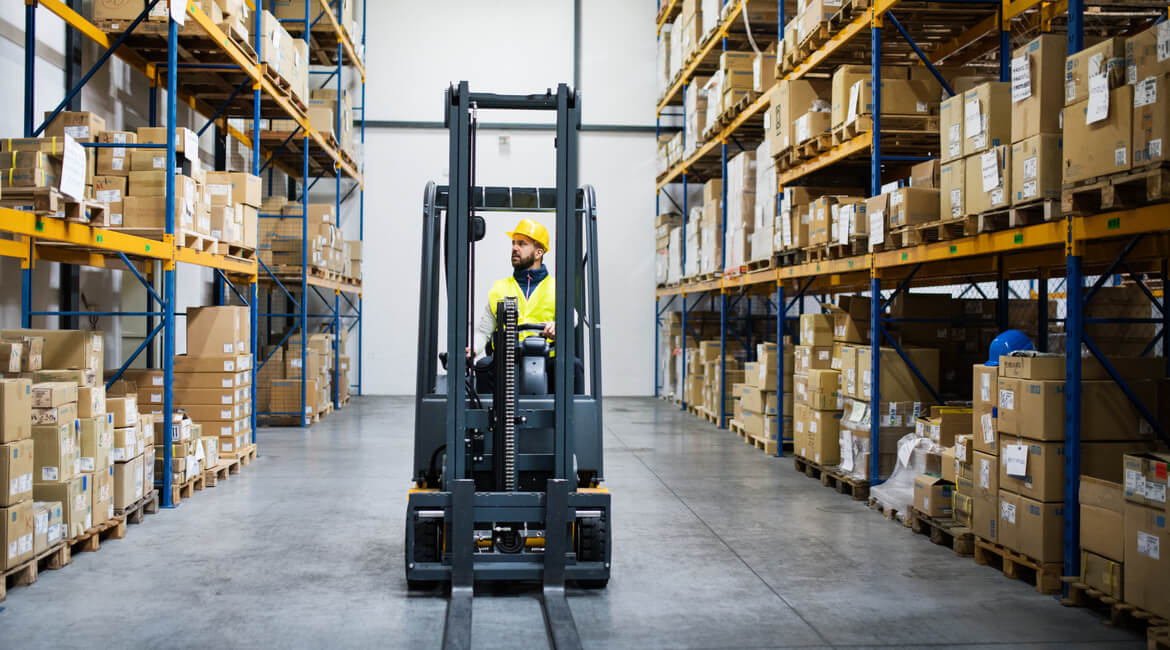Safety of machinery: how technologies help manufacturing

Industrial machinery safety is crucial when it comes to manage manufacturing settings and goods storage. A poor asset management strategy can lead to delays in production, down-time, and increased risks for the safety of workers.
Manufacturing companies have now to face new challenges. On one hand, demand is heading from mass production to a more customized approach. On the other hand, the rhythms of goods design, production, and delivery are getting more and more dynamic.
From production settings to the warehouse: speed and flexibility are increasingly needed and must also meet the need to contain costs. Tracking and locating systems are among those technologies that really can help companies to manage assets more efficiently.
Industrial safety of machinery: how to improve it with tracking and locating systems
The use of RTLS devices (Real-Time Locating Systems) for both the tracking and telemetry of material handling equipment allows enterprises to manage assets in a 4.0 perspective.
These are, in fact, small devices that, used with locating platforms, are suitable for many uses in different fields, such as in industry and logistics, on small handling equipment items, such as forklifts, lifters, AGVs and industrial cleaning equipment. But RTLS devices allow companies to improve machinery safety also in other industries, on earthmoving equipment and mining machinery, aerial work platforms and agricultural machinery.
These systems help reduce collisions and accidents starting with injury prevention in manufacturing areas and warehouses, thanks to collision avoidance systems using radars on vehicles and tags assigned to workers.
Collision avoidance systems and access management to industrial machinery
The most innovative RTLS solutions employ, among many locating technologies, the latest Ultra wideband (UWB) to calculate with extreme precision and in real time the distance between two vehicles or between a vehicle and a worker.
Equipping machinery with RTLS systems allows to do much more than tracking positions.
In fact, starting from an extremely precise, accurate and real-time tracking of vehicles and workers, these systems activate alerts and corrective mechanisms to prevent accidents.
In addition, the devices placed on the vehicles let companies – among various features – control accesses and driving licences. By doing so, an organization is certain that only authorized workers drive the vehicles.
Managing maintenance more efficiently with locating and tracking systems
Data collected by RTLS systems provide companies with important information on material handling equipment and their use.
Data such as usage times, engine temperature, battery status (and much more) help enterprises control the machinery’s “state of health”.
This information – accessible in real time, remotely – allows to program maintenance interventions more efficiently.
By acting before a breakdown occurs, a company can not only save costs associated with down-time, but also increase the efficiency and safety of the vehicle.
Increasing safety of industrial machinery thanks to smart asset management
The use of locating platforms and telemetry makes it possible to employ data collected by RTLS devices and sensors placed on machinery. These can be used to create, according to the specific needs of a business, a whole series of reports.
For instance, to improve workplace safety, companies can analyze data related to near-miss events, i.e., nearly occurred accidents.
These data, combined with those related to the transit flow in the facility areas, provide valuable insights for an organization to improve safety management. They may indicate, for example, that there are blind spots in a certain area or that there is excessive transit flow.
Starting from this information, an enterprise can develop a more efficient strategy in the management of critical areas. In addition, thanks to locating and tracking systems, it’s possible to make vehicles automatically slow down near specific intersections of the facility or warehouse where people and vehicles use to be.
Thanks to these technologies and systems, hardwares and softwares, it is therefore possible to employ all the benefits of data collection for higher production efficiency and a better safety in manufacturing settings.
